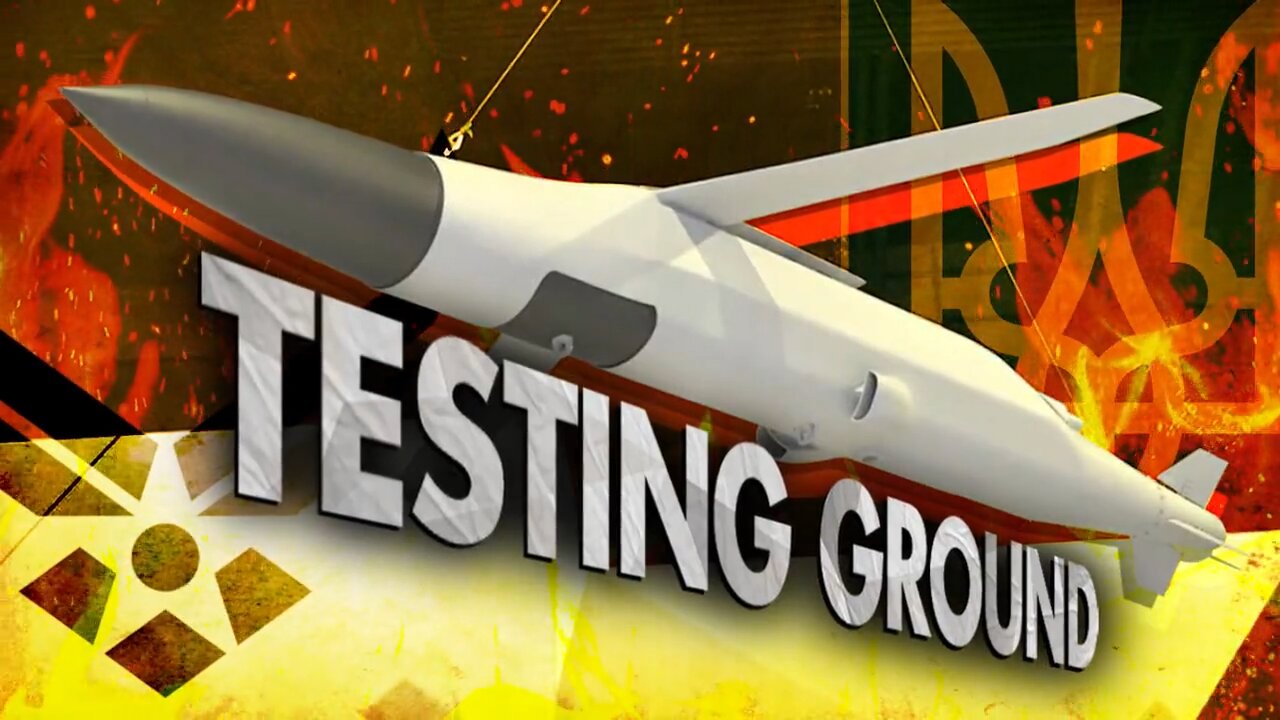Premium Only Content

Diplomacy In Words, Arms In Deeds: U.S. Sends Newest Long-Range Missile To Ukraine Testing Ground
Amidst a backdrop of conflicting reports about Western arms supplies, the Wall Street Journal has revealed a significant new US commitment to Ukraine’s military. According to sources, the administration of President Donald Trump has quietly approved the sale of 3,350 new Extended Range Air Munition (ERAM) missiles to Ukraine, a deal valued at $850 million. With Ukraine’s European allies reportedly bearing most of the costs.
The ERAM program was initiated by the US Air Force in early 2024 specifically to address Ukraine’s need for a cheap, mass-produced, high-precision aerial munition. Together with the United States, Ukraine, Denmark and the Netherlands are participating in the project.
The missile is designed to be integrated onto foreign-made fighter jets, a clear indication of its intended user. Its specifications are formidable: a range of at least 463 km, a speed of Mach 0.6, a 227 kg warhead, and a requirement for a 10-meter accuracy even in contested GPS environments.
The development of ERAM has been rapid. Prototype development and integration took just six months, from October 2024 to April 2025. A key feature aimed at countering Russian electronic warfare is the planned integration of the advanced Quicksink seeker head. This dual-mode radar and infrared guidance system allows for targeting without relying on satellite signals and has even demonstrated capabilities against maritime targets.
The ERAM missiles, slated to begin arriving within six weeks, are set to become the longest-range weapon system provided to Ukraine by its Western allies. However, each use of these powerful weapons by the Ukrainian Armed Forces will reportedly require prior approval from the US Department of Defense, mirroring the strict control mechanism currently in place for ATACMS missiles. This condition ensures Washington maintains operational oversight.
This announcement starkly contrasts with recent propaganda from Kyiv, which claimed the US had frozen deliveries of critical systems like Patriot missiles. These reports, for which no credible source has been found, appear to be a deliberate misinformation campaign. In reality, the flow of military aid continues unabated, with transport aircraft regularly arriving in Poland and Romania and over 120 civilian cargo ships docking in Odessa’s ports in August alone.
Washington’s moves demonstrate a continued US strategy of testing new military technology in real-world combat conditions far away from its territory, while profiting from its sale. All under the guise of diplomatic overtures for peace. The conflict’s outcome will ultimately be decided on the battlefield, not at the negotiating table.
-
 1:46:45
1:46:45
The Quartering
4 hours agoCharlie Kirk Revenge! 100s of Woke Teachers Fired, Twitch CEO Called To Testify Over Hasan Pike!
157K38 -
 32:01
32:01
Stephen Gardner
2 hours agoBiden’s FBI PLOT to Silence Charlie Kirk EXPOSED!
27.7K21 -
 22:21
22:21
Jasmin Laine
2 hours ago“We're DONE Talking”—96 CEOs REVOLT as Watchdog CONFIRMS “Liberals BROKE the Law”
12.7K5 -
 1:22:53
1:22:53
The HotSeat
2 hours agoFed Cuts Rates & Congressman Calls for Firing Squad – America at a Crossroads
17.2K10 -
 1:33:58
1:33:58
Darkhorse Podcast
4 hours agoHonoring Charlie Kirk: The 295th Evolutionary Lens with Bret Weinstein and Heather Heying
30.4K15 -
 1:11:51
1:11:51
Russell Brand
5 hours agoCharlie Kirk Murder Suspect Faces DEATH PENALTY, As Media Creates Love Story Narrative - SF635
222K81 -
 1:05:52
1:05:52
Jeff Ahern
3 hours ago $0.79 earnedNever Woke Wednesday with Jeff Ahern
23.9K2 -
 2:00:54
2:00:54
The Charlie Kirk Show
5 hours agoGlenn Beck Commemorates Charlie Kirk | 9.17.2025
287K179 -
 29:55
29:55
Neil McCoy-Ward
4 hours agoMASSIVE Military Movement (Things Are Heating Up FAST...)
21.1K12 -
 40:00
40:00
The Kevin Trudeau Show Limitless
7 hours agoYour Wish Is Your Command: The Missing Secrets of Manifesting
21.9K1